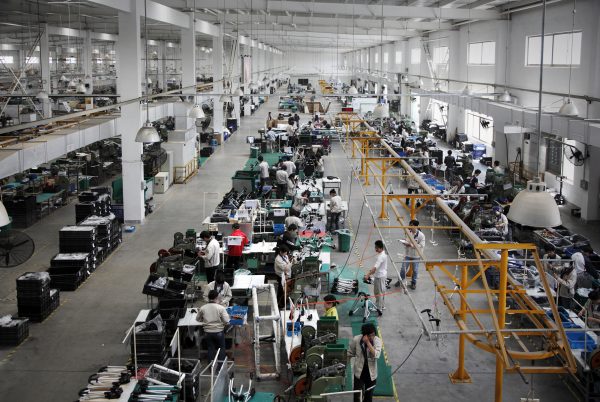Because they are more productive, private firms have largely displaced state firms in sectors that are open to entry. State firms remain completely dominant only in natural monopolies, such as electric power and rail transport, and in sectors where entry is restricted: upstream oil and gas, financial services, and telecommunications.
China has not developed a successful alternative model of economic growth. The pursuit of what some call ‘state capitalism’ has significantly reduced, rather than enhanced, China’s economic growth. Where China has relied primarily on the market — agriculture, most of manufacturing, and in services such as retailing and restaurants — success has been obvious.
In coming to these conclusions my recent book Markets over Mao: The Rise of Private Business in China corrects four important misperceptions or myths about the Chinese economy. The first is that China’s economy is dominated by state firms. The reality is very different. State firms now account for only one-fifth of manufacturing output, compared to four-fifths when reform began. They account for only one-tenth of investment in manufacturing. State firms in all sectors account for only one-tenth of urban employment and only one-tenth of China’s exports.
The second misperception is that China has one of the world’s most powerful bureaucracies in terms of employment. Combined employment by government and party organs, including government agencies and public institutions as well as party bodies, including those employed at the central, provincial, and sub-provincial level, is about 40 million. This is greater than the population of many states. But the International Labor Organization, which measures government employment per 1000 residents, puts France in the clear lead with 95 employees per 1000 residents, the United States 74, Germany 53, Turkey and Mexico each 38, South Africa 32, while China has only 30.
The third misperception is that while state-owned enterprises are fewer in number, these firms are more powerful than ever. In particular, those who are critical of what they see as China’s model of state capitalism charge that central SOEs earn astronomical profits, given the monopolies and protected markets they enjoy. Industrial policies in the Hu–Wen decade certainly seemed to favour state firms, especially those under the purview of the State Asset Supervision and Administration Commission (SASAC), established in 2003 just as Hu and Wen assumed office.
By 2013 the profits of SASAC’s enterprises had quadrupled, seemingly supporting the view that SASAC was successfully creating ‘national champions’. Less noticed, the share of profits of all non-financial corporations accruing to SASAC’s firms fell slightly — they actually underperformed. More importantly, the return on assets of SASAC firms for the past six years has been persistently far less than their cost of capital. By 2013 the gap was 3.8 per cent compared to 6.8 per cent. In short, SASAC firms have been a huge drag on China’s growth.
The fourth misperception is that private firms get little access to credit. As the Financial Times put it earlier this year, private firms ‘are typically starved of cash. Meanwhile the larger state-owned enterprises enjoy easy access to loans’. The reality is quite different. According to data released by the People’s Bank of China, private firms received 52 per cent of all credit flowing to firms from 2010–2012, while the share of state firms was only 32 per cent. This should not be a surprise. Given the much higher return on assets generated by private industrial firms, their interest coverage ratio, a common measure of credit worthiness, is more than twice that of state companies.
The implications of this analysis are fundamentally optimistic for China’s growth over the medium term, if the reforms announced at the Third Plenum last year are actually carried out. As already noted, state firms don’t dominate China’s economy, but they are still a substantial drag on its growth. This is because their average return on assets is not only well below that of private firms, but substantially less than the cost of capital. For example, in upstream oil and gas more than 90 per cent of output is produced by China’s three national oil companies. But Sinopec and PetroChina, which together account for three-quarters of the assets of these three firms, have returns less than half that of Exxon-Mobile and Chevron. In services, the return on assets of state firms is only half that of private service providers. China Unicom and China Telecom earn only 2 per cent and 4 per cent, respectively, substantially below the cost of capital. Services now absorb over half of all investment but the state share of services investment is four times that in manufacturing.
The party’s pledge at the Third Plenum to eliminate all but natural monopolies, if implemented, will create enormous opportunities for new private firms in upstream oil and gas and for private service providers, not just in telecoms and financial services, but in other modern business services. This will reduce a substantial misallocation of capital and support China’s growth over the medium term.
Nicholas R. Lardy is Anthony M Solomon Senior Fellow at the Peterson Institute for International Economics.He is author of their new book, Markets over Mao.
This article appeared in the most recent edition of the East Asia Forum Quarterly, ‘The state and economic enterprise‘.

